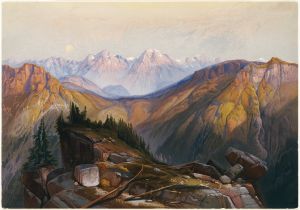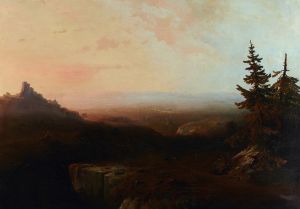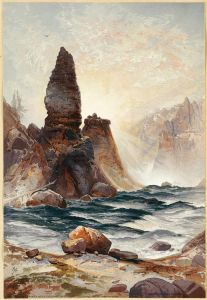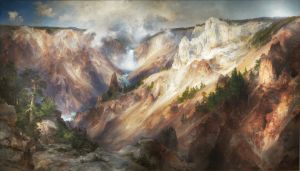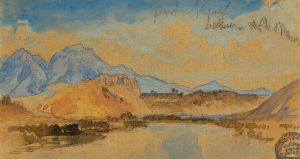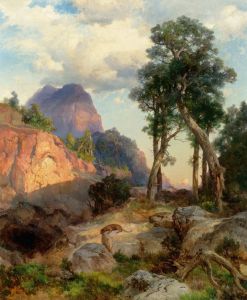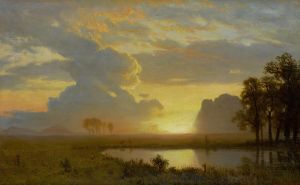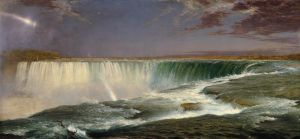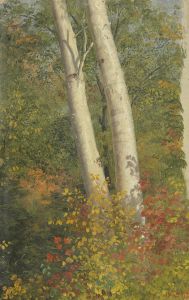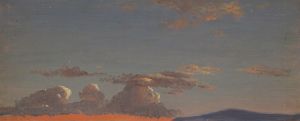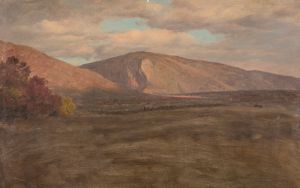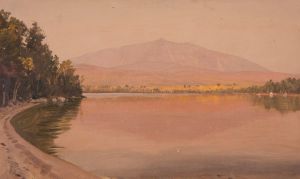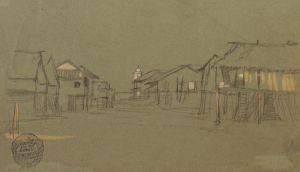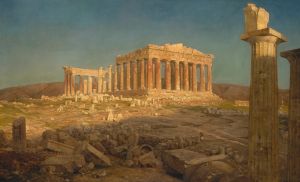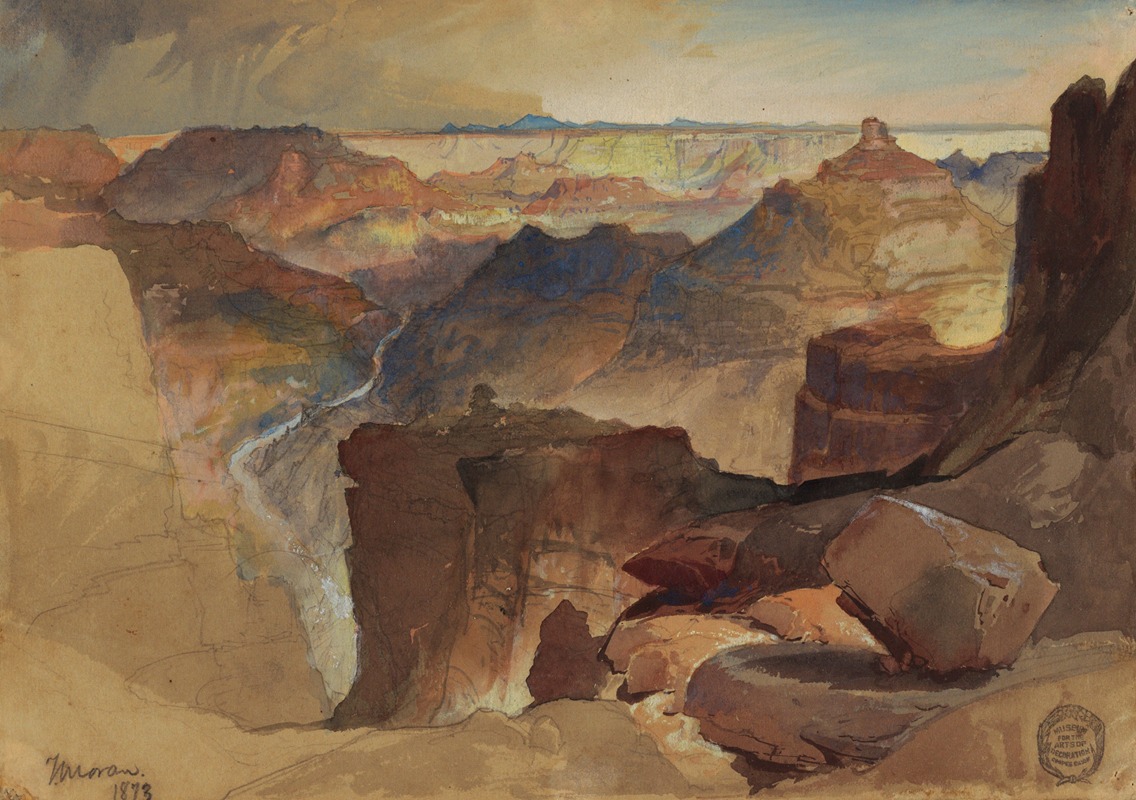
View from Powell’s Plateau, Grand Canyon, Colorado
A hand-painted replica of Frederic Edwin Church’s masterpiece View from Powell’s Plateau, Grand Canyon, Colorado, meticulously crafted by professional artists to capture the true essence of the original. Each piece is created with museum-quality canvas and rare mineral pigments, carefully painted by experienced artists with delicate brushstrokes and rich, layered colors to perfectly recreate the texture of the original artwork. Unlike machine-printed reproductions, this hand-painted version brings the painting to life, infused with the artist’s emotions and skill in every stroke. Whether for personal collection or home decoration, it instantly elevates the artistic atmosphere of any space.
Frederic Edwin Church, a prominent figure in the Hudson River School of American landscape painting, is renowned for his grand and detailed depictions of natural scenes. One of his works, "View from Powell’s Plateau, Grand Canyon, Colorado," exemplifies his skill in capturing the vastness and majesty of the American landscape. Although specific details about this particular painting are scarce, Church's broader body of work and his approach to landscape art provide context for understanding this piece.
Church was born in 1826 in Hartford, Connecticut, and studied under Thomas Cole, the founder of the Hudson River School. This movement was characterized by its romantic portrayal of the American wilderness, emphasizing the sublime beauty and grandeur of nature. Church became known for his meticulous attention to detail and his ability to convey the awe-inspiring scale of natural wonders.
In the mid-19th century, the American West was a subject of fascination and exploration. The Grand Canyon, with its immense scale and dramatic landscapes, was a particularly compelling subject for artists and explorers alike. Church, like many of his contemporaries, was drawn to these landscapes, seeking to capture their essence on canvas.
"View from Powell’s Plateau, Grand Canyon, Colorado" likely reflects Church's interest in the interplay of light, color, and topography. His paintings often feature dramatic contrasts between light and shadow, capturing the changing moods of the landscape. Church was known for his use of luminism, a technique that emphasizes the effects of light on the landscape, creating a sense of depth and atmosphere.
The painting's title suggests a vantage point from Powell’s Plateau, a location named after John Wesley Powell, a geologist and explorer who led expeditions through the Grand Canyon in the late 19th century. Powell's explorations were significant in mapping the region and bringing its geological and natural wonders to the attention of the wider public. Church's choice of this viewpoint indicates his interest in both the natural beauty and the scientific significance of the area.
Church's works were often informed by his travels and his interest in natural science. He was known to undertake extensive journeys to gather sketches and studies, which he would later use as references for his large-scale studio paintings. This dedication to firsthand observation allowed him to create works that were both artistically compelling and scientifically informed.
While specific details about "View from Powell’s Plateau, Grand Canyon, Colorado" are limited, it can be appreciated within the context of Church's broader oeuvre. His paintings are celebrated for their ability to evoke the majesty of the natural world and to inspire a sense of wonder and reverence for the landscapes they depict. Church's legacy as a leading figure in American landscape painting endures, and his works continue to be admired for their beauty and technical mastery.





